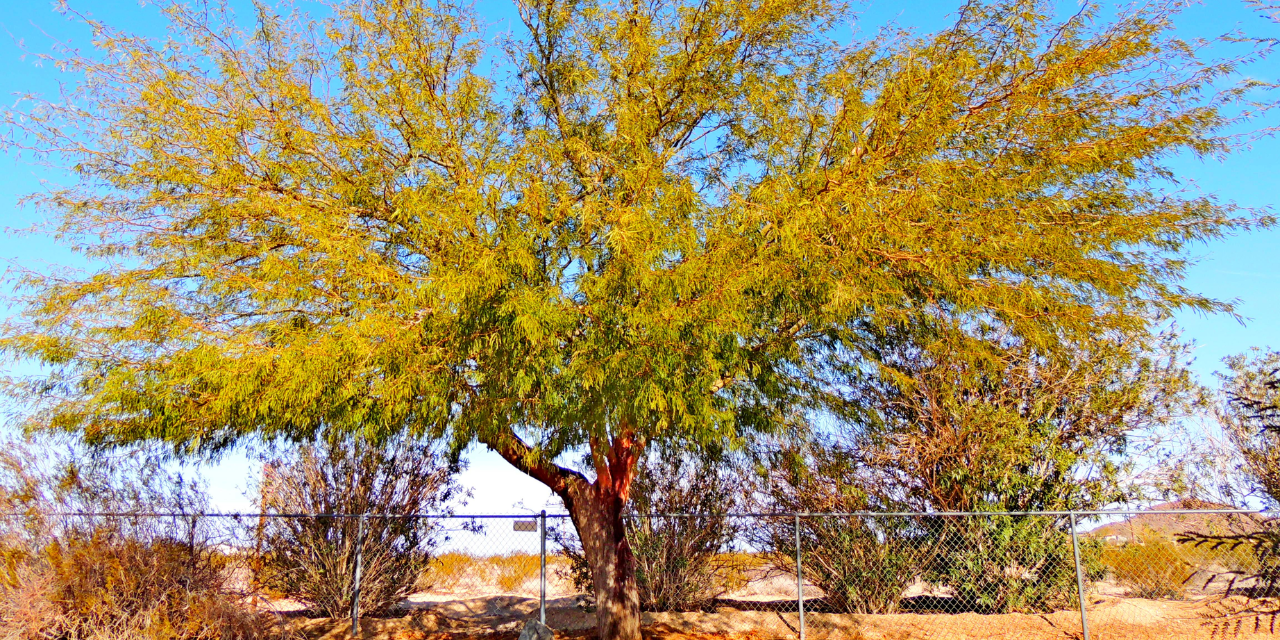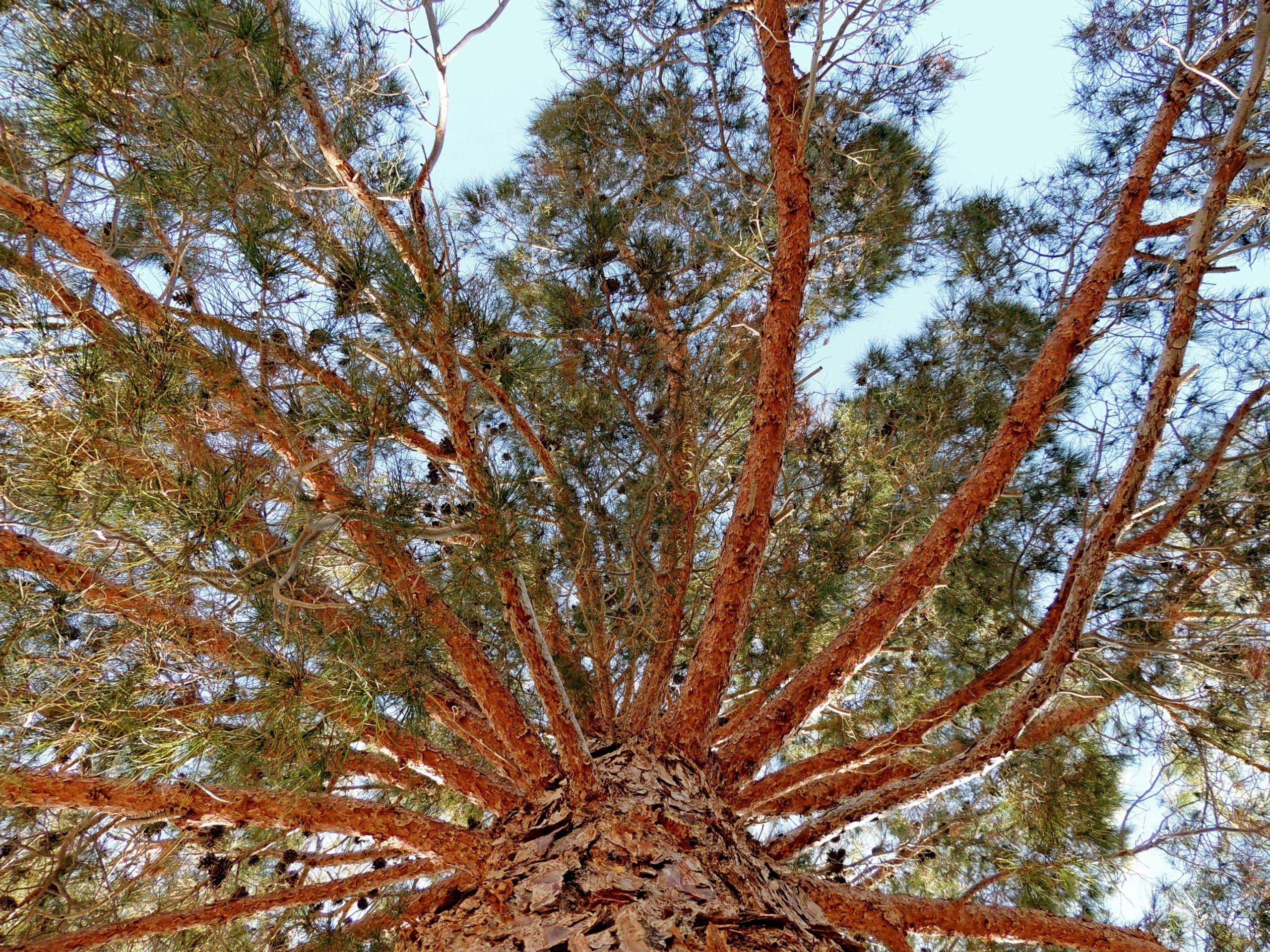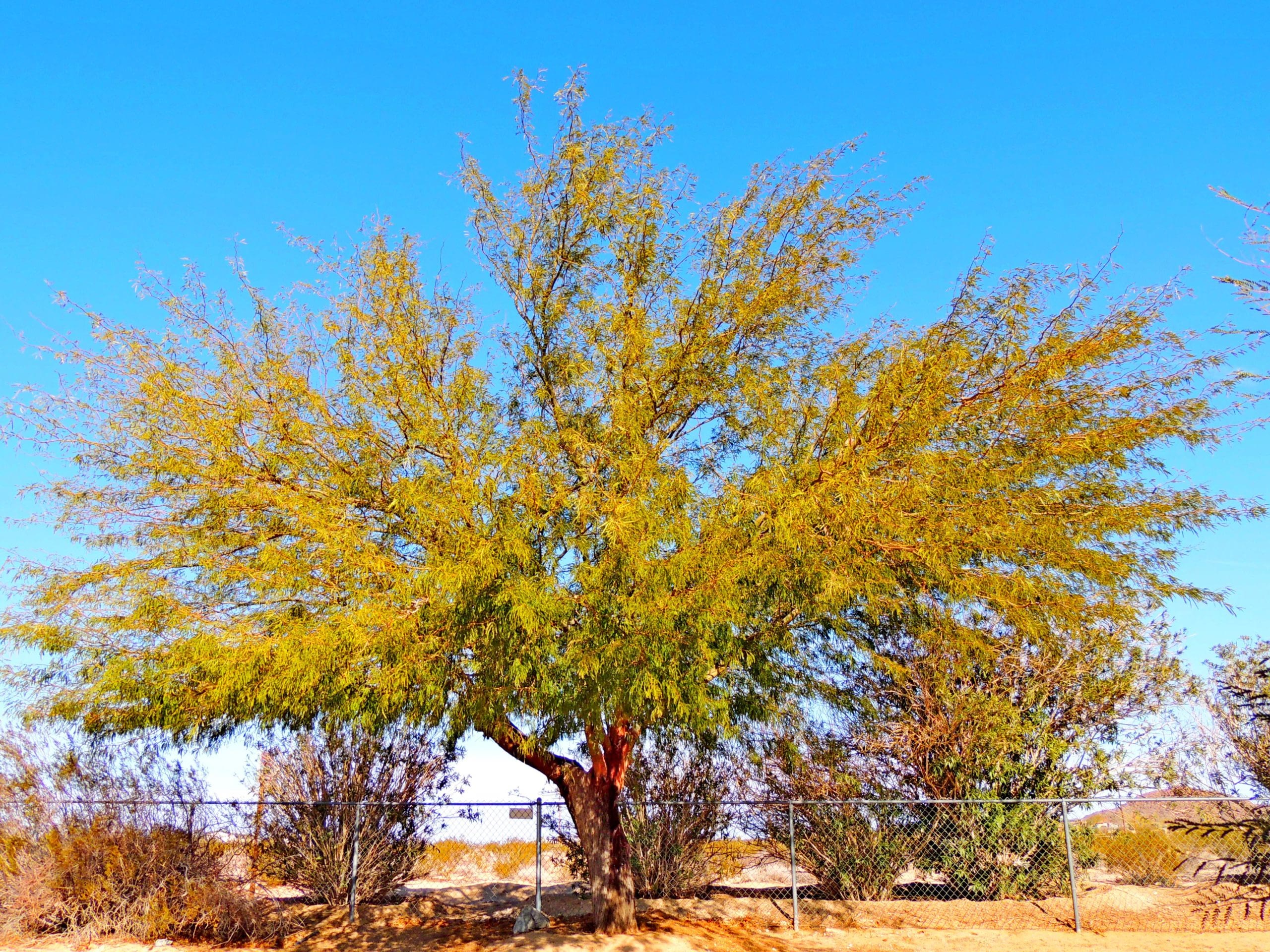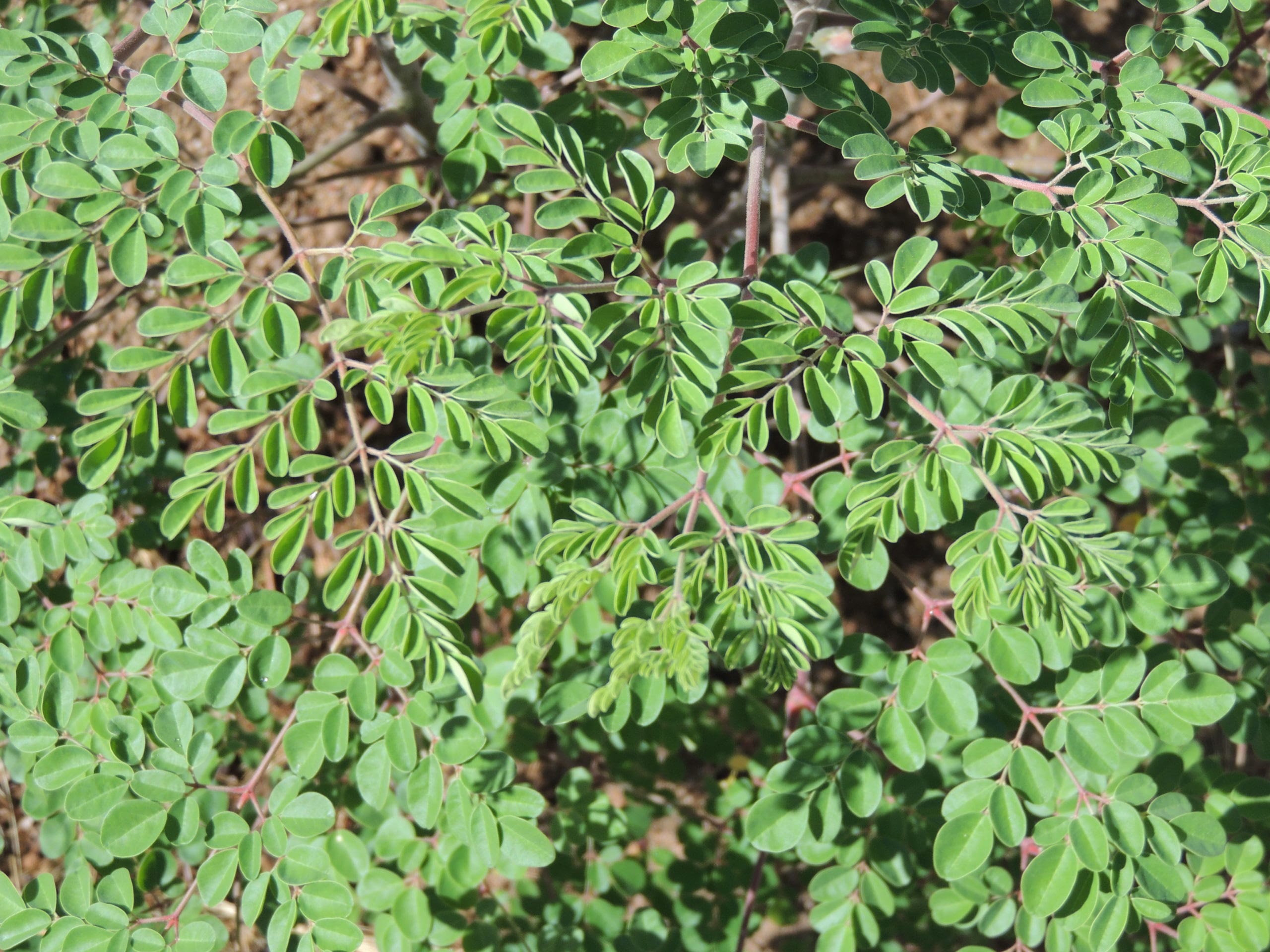
Grow Trees, Grow Trees, Grow Trees!
By Philip Bonafede

Philip Bonafede has been growing desert gardens for over 45 years and has been doubling as one of the greater Joshua Tree area’s snake wranglers and snake-aversion dog trainers since 1998. You can contact him at 760-401-4488 or email at pbdesert@earthlink.net
Nothing on your property should be more important than planting trees. They provide much needed shade, wind block, food, resources, and a deep satisfaction for generations to come. They release oxygen while digesting carbon dioxide. With all the deforestation on the planet, we all need to chip in.
Local Tree Sources
Mesquite and Desert Willow grow fairly fast. We have our own local indigenous tree farm in North Joshua Tree, Opuntia Garden Farm, run by Damien Lester and Maya Toccata. Both are Certified Permaculture designers with a wealth of information (contact information below). I planted 3 desert willows from this farm, and the willows are now exceeding 10 feet after 2 years growth.
Pine Trees
In 2000, I planted a 3’ Mediterranean Pine Christmas tree, now 30+ feet tall which provides amazing shade for the barbecue area during warmer months and smells like vanilla when wet. Over the past 15 years, I successfully transplanted several potted Aleppo pine Christmas trees, aka Spanish Umbrella aka Italian Stone Pine. Pines only grow 1’- 2’ per year, so plant now if you’re planning to settle down.
Mesquite Trees for Shade & Barbecue Wood
In 2004, I planted a 4-foot mesquite tree that now exceeds 35 feet high and easily 40+ feet wide! It provides quite a bit of shade in the front yard. Water comes from the leach line. Mature mesquite needs to be pruned often which is excellent for barbecue wood. In 2020, I found a mesquite seedling in the raised bed garden, transplanted it into a prepared hole 2 years back and it is over 5 feet tall now, so they can grow relatively fast. 2-3’ per year when properly watered.
Varmint Control Tip
Rats and squirrels should never be poisoned! The poison then kills the raptors, coyotes, bobcats, roadrunners, and snakes that eat the poisoned varmint. Be a responsible land steward and use only natural no-kill traps like Havahart, available on eBay. Do not use kill traps!
Happy New Year!
Philip Bonafede’s gardening tips can be found on Facebook: Joshua Tree Gardening
Damian Lester of Opuntia Garden Farm can be contacted at damian@opuntiagardenfarm.com
Maya Toccata of Opuntia Garden Farm can be contacted at maya@opuntiagardenfarm.com

Fig Tree Cutting
Prune 4–5-inch sections during the trees’ dormant period in the winter, remembering which is the ‘down’ side of the branch and place it in a small pot, watering regularly to keep moist. Come spring, they sprout leaves. You transplant to a larger container and eventually into the ground in a smart location. The hole should be prepared with quality organic material to a depth of about 3-4 feet. I chose the east side of my home, with less wind, for 2 transplants which went from 6 inches to 4 feet in a matter of months! Last winter, my neighbor donated 5 fig tree cuttings: Black Mission and Violet de Bordeaux. They will soon provide shade for the aviary & atrium area as they thicken.
Transplanting Tips
Transplant gently and do NOT pack the dirt around and into the hole over your new tree! ~Let the weight of the water gently pack the soil down naturally~ Water bubbles will come from the air pockets in the well you create, showing you that the soil is compacting naturally. Always make a well around your new transplants and water daily for the first month or two in the spring. Switch to every other day and then every third day in the early fall.
Moringa Trees
Moringa is perhaps one of the most nutritious food trees you can grow. The edible leaves taste like a cross between spinach and a radish and are loaded with vitamins and minerals. They grow relatively fast from a seed and can easily be grown in a greenhouse or outdoors. Some third world countries grow these trees as a famine food. They are deciduous, yet before the leaves turn yellow in the fall you can dry them, grind into a powder, and mix with spike seasoning in a coffee grinder to create a condiment for salads, mashed potatoes, and veggie dishes.
Photos by Philip Bonafede














